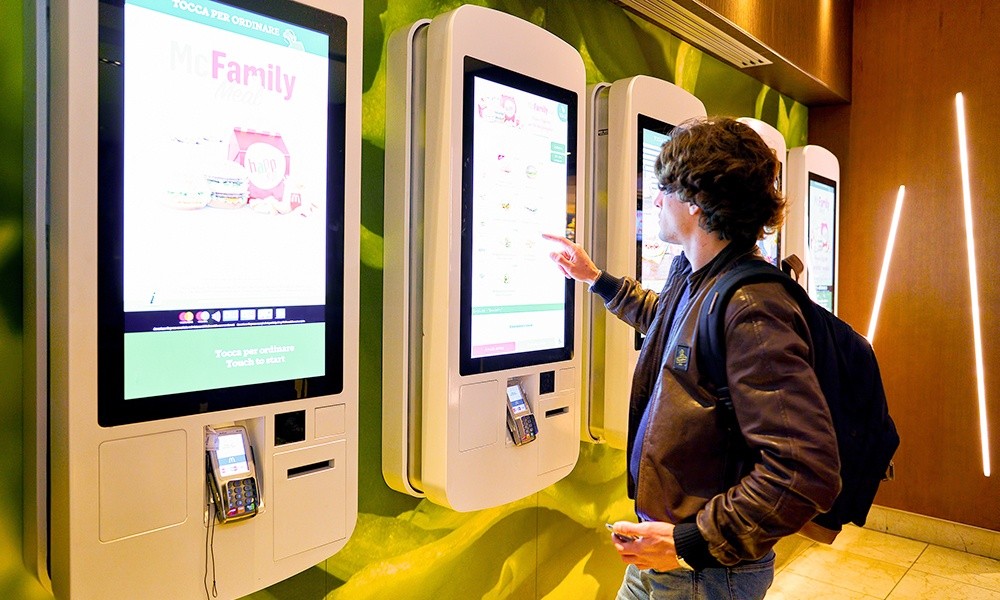The Rise of Self-Service Kiosks in Modern Business

In recent years, there has been a paradigm shift in the way businesses engage with their customers. The advent of self-service kiosks has played a pivotal role in this transformation, offering a seamless and efficient way for customers to interact with businesses across various industries.
Enhancing Customer Experience
One of the primary drivers behind the surge in self-service kiosk adoption is the desire to enhance the overall customer experience. These interactive platforms empower customers to take control of their transactions, providing a user-friendly interface that caters to diverse needs. From ordering food at a restaurant to checking in at a hotel, self-service kiosks are becoming ubiquitous, allowing customers to navigate services at their own pace.
Streamlining Operations and Reducing Costs
Beyond the customer-facing benefits, businesses are increasingly recognizing the operational advantages of implementing self-service kiosks. Automation of routine tasks, such as order placement or ticketing, not only reduces the workload on staff but also minimizes the potential for errors. This streamlined approach contributes to increased efficiency and, in turn, cost savings for businesses in the long run.
Industries Embracing the Shift
As the versatility of self-service kiosks becomes apparent, various industries are quick to integrate this technology into their operations.
Hospitality Sector
Hotels and resorts are leveraging self-service kiosks for check-ins and check-outs, providing guests with a swift and hassle-free experience. This not only improves customer satisfaction but also allows staff to focus on personalized services, creating a win-win situation for both customers and businesses.
Retail Revolution
In the retail sector, self-service kiosks are changing the way customers browse and purchase products. From self-checkout options to interactive product catalogs, retailers are embracing these kiosks to cater to the evolving preferences of tech-savvy consumers.
Challenges and Future Trends
Despite the widespread adoption of self-service kiosks, challenges and considerations still exist. From cybersecurity concerns to ensuring accessibility for all customers, businesses must navigate potential pitfalls as they integrate this technology. Looking ahead, advancements such as artificial intelligence (AI) and enhanced personalization are expected to further revolutionize the self-service kiosk landscape, offering even more tailored and intuitive experiences for users.

Connectivity and IoT Integration
At the heart of the self-service kiosk revolution lies robust connectivity and integration with the Internet of Things (IoT). This enables real-time data exchange, ensuring that kiosks are always up-to-date and capable of providing accurate information. From inventory levels to personalized recommendations, the seamless connection to backend systems enhances the overall functionality and responsiveness of these kiosks.
Touchpoints in Transportation
Transportation hubs, including airports and train stations, are embracing self-service kiosks to optimize passenger experiences. From ticketing to baggage check, these touchpoints empower travelers, reducing queues and wait times. This shift not only improves efficiency but also allows transportation authorities to allocate resources more effectively.
Overcoming Challenges – Ensuring a Seamless Transition
Cybersecurity Considerations
As businesses increasingly rely on digital platforms, the need for robust cybersecurity measures becomes paramount. Self-service kiosks, dealing with sensitive customer information, pose potential security risks. The industry is actively addressing these concerns by implementing advanced encryption, secure authentication, and regular updates to fortify the kiosks against cyber threats.
Accessibility for All
While self-service kiosks offer convenience, it’s crucial to ensure inclusivity. Businesses must design kiosks that are accessible to individuals with diverse needs, including those with disabilities. This involves incorporating features like voice commands, tactile interfaces, and adjustable screen heights to cater to a wide range of users.
The Global Landscape – Self-Service Kiosks on a Worldwide Scale
Global Adoption Trends
Self-service kiosks are not confined to a particular region or industry; their adoption is a global phenomenon. From bustling urban centers to remote rural areas, businesses worldwide are recognizing the transformative potential of these kiosks. This global adoption trend reflects a universal acknowledgment of the benefits these technologies bring to both consumers and businesses.
Cultural Adaptation and Localization
Successful implementation of self-service kiosks involves understanding and adapting to local cultural nuances. From language preferences to user interface design, businesses are tailoring their kiosk experiences to align with the cultural expectations of diverse populations. This localized approach ensures that self-service kiosks resonate with users across different regions.
Conclusion:
Shaping Tomorrow’s Business Landscape
The rise of self-service kiosks marks a pivotal moment in the evolution of modern business practices. From enhancing customer experiences to streamlining operations and overcoming challenges, the journey of self-service kiosks is dynamic and promising. As businesses continue to embrace and adapt to these technological innovations, the landscape of customer interactions and operational efficiency is destined to undergo further transformation, paving the way for a tech-driven future.




Leave a Comment